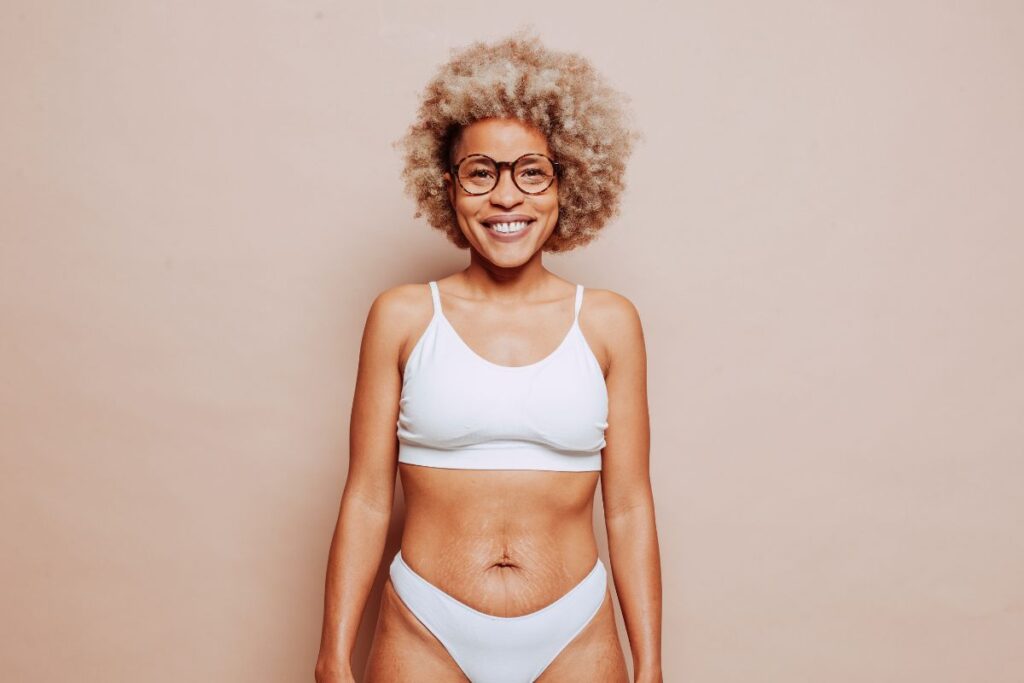Tired of those unwanted stretch marks after pregnancy, weight fluctuations, or puberty? Wondering why they appear and how to get rid of them for good? Let’s dive into the causes of stretch marks and the most effective ways to reduce their appearance.
What Are Stretch Marks?
Stretch marks, also called striae, are scars that appear when the skin is stretched rapidly. They often start as red, purple, or dark lines and fade to a lighter colour over time. You can notice stretch marks on the abdomen, thighs, hips, breasts, and arms.
Why Do Stretch Marks Happen?
When the collagen and elasticity of the skin are stretched beyond their limits, stretch marks develop. A number of factors may be responsible:
1. Pregnancy: Stretch marks on the breasts and abdomen result from the skin stretching as the baby grows.
2. Rapid weight gain or loss: Unexpected weight fluctuations can cause the skin to stretch and tear, leading to stretch marks.
3. Puberty: During adolescence, growth spurts can cause stretch marks on areas like the hips, thighs, and breasts.
4. Corticosteroid Use: Corticosteroid creams can weaken the skin’s structure, making it more likely to develop stretch marks.
5. Genetics: If your parents had stretch marks, you might be more prone to developing them.
How to Get Rid of Stretch Marks
While stretch marks cannot be completely removed, there are effective treatments that can minimize their appearance:
1. Retinoid Creams:
Stretch marks can be less noticeable, and skin cells can be renewed with the use of retinoid creams. As per research, if you apply topical retinoids early on, it can fade stretch marks.
2. Laser Therapy:
Laser treatments can promote collagen production and improve skin texture. According to research, stretch marks can be effectively made to seem better with fractional CO2 lasers and pulsed dye lasers.
3. Microneedling:
Through the creation of tiny punctures in the skin, microneedling promotes the formation of collagen and reduces the appearance of stretch marks.
4. Hydration and Moisturization:
Using moisturizing lotions to keep the skin well-hydrated and moisturized as it improves the skin’s elasticity, increases its suppleness, and minimizes the chance of developing new stretch marks.
Adverse Effects of Treatments:
1. Retinoid Creams:
Retinoid creams can cause skin irritation, redness, and dryness. But don’t use these during pregnancy, as they can lead to birth defects.
2. Laser Therapy:
Laser treatments are generally safe, but there may be some risk of hyperpigmentation, hypopigmentation, or scarring if not done properly.
3. Microneedling:
Microneedling can cause skin irritation, redness, and swelling temporarily, but it is generally safe when performed by a trained professional.
Frequently Asked Questions
Can stretch marks be completely removed?
No, you cannot completely remove stretch marks, but treatments like retinoids, laser therapy, and microneedling can greatly reduce their appearance.
Do moisturizers help with stretch marks?
While moisturizers can improve the elasticity of the skin, they won’t completely remove stretch marks. However, they can help prevent further skin damage.
Are there natural remedies for stretch marks?
While natural treatments like cocoa butter and aloe vera can help make skin seem better, they can’t get rid of stretch marks entirely.
How HealthPil Can Help:
If you’re struggling with stretch marks, HealthPil connects you with dermatologists who specialize in skin treatments. Whether you’re considering laser therapy or topical treatments, our experts will guide you with effective, safe solutions.
Disclaimer:
This article is for informational purposes only. Always consult a healthcare provider before starting any treatments for stretch marks.

